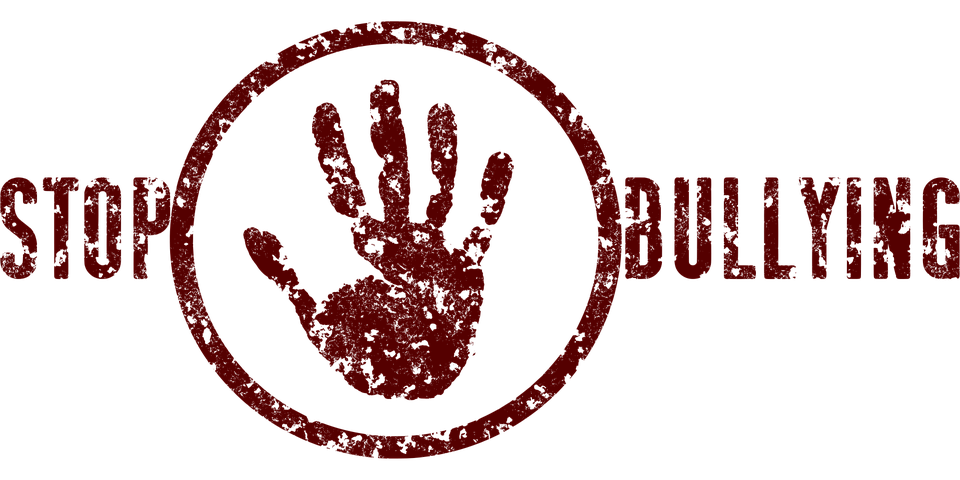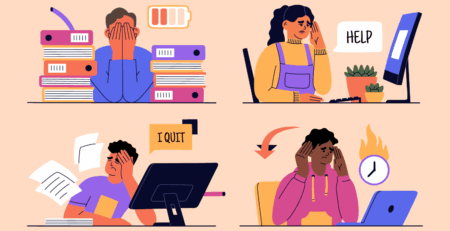Workplace bullying is not a novel problem. Humans have mistreated each other in the workplace since the very first workplace existed. In 2024, 32 percent of working American adults personally experienced workplace bullying, for a staggering estimate of 52.2 million people. Overall, 55 percent reported top-down bullying.
To recap, workplace bullying, whether it is from a supervisor or peer, is the sustained mistreatment of an individual: their ability to perform at their job, reputation, and mental health. Bullies can be despicably manipulative or viciously controlling; bullying can alter the victim’s reality and create a condition where the victim does not feel they have power or agency.
It is a toxic behavior, and nobody deserves to be bullied at work, yet it continues to haunt countless employees across the globe daily.
Table of Contents
Types of Bullying in the Workplace
Let’s take a look at what bullying in the workplace commonly looks like.
Verbal Abuse
Verbal abuse may involve demeaning comments, unfair criticism, slurs, telling offensive jokes, gossiping, and spreading rumors about someone. These actions involve humiliating or intimidating the person with intentional demeaning remarks intended to diminish their self-confidence, credibility, and reputation as a professional. For example, demeaning comments like, “You’ll never get it right,” or, “How can anyone be so incompetent?”
Physical Abuse
Physical abuse can happen in many forms, and in each case, the effect is significant. Physical abuse can include any unwanted physical contact, such as touching or brushing against someone without consent. It can also involve the destruction of a person’s belongings. While there may not be violence in a verbal threat, if there are aggressive behaviors along with the threat, physical abuse may occur, creating a hostile and unsafe work environment.
Sexual Abuse
Sexual abuse can consist of verbal and physical harassment. The harassment might include inappropriate sexual comments or jokes or unwanted advances in action or gestures. It can also include requesting sexual favors for something beneficial, such as promotions, or threatening negative action if you don’t agree to offer sexual favors.
No specific gender may be free from such behavior. Many males act in this manner, and more females are victims. This kind of bullying can create fear and power imbalance, along with a damaging emotional state.
Other Forms of Workplace Bullying
Bullying can also take the form of discriminatory bullying, which includes unfair treatment based on a person’s race, disability, gender identity, sexual orientation, age, and/or religion.
Discrimination-based bullying oftentimes comes in the form of harassment, exclusion, or demeaning comments that target a protected characteristic of the worker. Bullying based on discrimination can create a hostile and resentful workplace. These behaviors can have damaging effects on the employee, and they may violate legal obligations and hinder an employee from being their best.
Now that we have touched upon the different forms of bullying, we can consider how much bullying affects an individual, as well as the workplace as a whole.
Effects of Workplace Bullying
Bullying causes stress for victims, leading to significant emotional and physical strain. Emotional bullying can cause changes in mood and decreased self-esteem, panic attacks, anxiety, stress, and even depression. Physical bullying can cause symptoms like increased blood pressure, headaches, sleep problems, appetite problems, muscle tension, and even ulcers. Additionally, the other employees who witness this bullying can also face emotional and physical stress impacts.
The impact of workplace bullying on productivity is also devastating. Bullying can reduce the quality of work, increase absenteeism, and contribute to impairments in concentration and decision-making. When employees are impacted negatively by the workplace, their desire to accomplish their assigned duties declines, and they often do not have problems at work with motivation.

On a broader scale, bullying in the workplace fosters a hostile work environment, leading to decreased employee loyalty, higher turnover rates, and increased use of leave and healthcare benefits. It can also result in costly legal complications and potential long-term damage to the organization’s reputation.
With so much at stake, it makes you wonder why people do bullying. Let’s explore the underlying reasons and what drives this harmful behavior in the workplace.
Why do People Bully?
Workplace bullying is influenced by many factors, describing bullies. Often a bully suffers from low self-esteem. They may bully someone that makes them feel jealousy and envy and disrupts them in a way that they are trying to preserve themselves.
Another factor is that they often have low social competence and emotional intelligence. Additionally, people who are self-centered and often act selfishly and frequently think at their own expense are more likely to be a bully at work.
How to Deal With Bullies at Work
Bullies can be addressed, and their behavior can be stopped, both at the individual victim level and the larger organizational level. Following are some strategies to guide your fight.
For the Targeted Individuals
Follow the following:
Be Open and Assertive
When faced with bullying in the workplace, confront the bully directly. Be clear about what they are doing and why it is unacceptable and will not be tolerated. You are sending a strong message telling them what you accept and do not accept, which may help to stop future abuse.
Again, you must remain professional and not retaliate. Use assertive “I” statements to discuss your feelings and how they pertain to citing specific issues: “I feel disrespected when you interrupt me during a meeting.”
Have a clearly stated consequence if they cross the line again. This strengthens your position and shows that you are not messing around about wanting respect in the workplace.
Document Evidence and Ask for Help
To take effective action against workplace bullying, you need to keep a record of every incident. Write down all the details with an account of what happened, when it happened, and where it happened, and make a note of any witnesses present.
Also, gather any evidence that will help your claims, such as emails, messages, or any other type of document. The more evidence you have, the stronger your case and the less likely the bully will successfully retaliate against you, should you need to confront the bully or disappear altogether.

If you fail at confronting the bully directly, your next step is to report the bullying behavior to your employer. Review your company’s handbook, policies, or rules of workplace behavior and any policies, procedures, and/or punishments if a complaint is taken up against them to make a formal complaint to Human Resource (HR).
If your employer fails to take appropriate action or if the bully holds a position of power, seek external support. Consider consulting a legal counselor or exploring employee assistance programs for additional guidance and protection.
For Coworkers
If you see your peers being bullied, show your support and encouragement. If you can, use all reasonable ways to take action by confronting the bully about what they are doing. Report the behavior to your supervisor or an appropriate authority in your organization. Taking action is a good way to work towards a safer and more supportive workplace.
For Leadership and HR
Follow the following:
Educate and Communicate
It is crucial to ensure employees are well-informed about workplace rules regarding misconduct and the penalties for violations. Provide clear definitions and examples of bullying behaviors and outline the steps for reporting incidents. Encourage employees to come forward by implementing an open-door policy that fosters trust and transparency.
Sensitivity and Skills
Leaders and HR professionals must be trained to handle bullying complaints with sensitivity and professionalism. Clear expectations should be set for workplace behavior. Involve employees in decision-making processes and foster a sense of autonomy and inclusivity to prevent bullying from occurring.
Address Complaints Promptly
Take all complaints seriously and conduct thorough investigations immediately. When confronting the bully, specify the incidents, explain how their behavior has impacted others, and enforce consequences as outlined in company policy.
Assess and Act
Carry out regular assessments to evaluate the prevalence and impact of bullying within the organization. Use the findings to address any gaps, enforce disciplinary measures, and take preventive actions to ensure a respectful and healthy workplace for all employees.
Break the Silence!
Workplace bullying is a serious issue that affects individuals and organizations alike. By addressing it at every level, through individual action, coworker support, and strong leadership, organizations can create a culture of respect, accountability, and collaboration. Taking a stand against bullying is not just about resolving conflicts. It’s about creating a healthier, more productive environment where everyone can thrive!
Have a great idea? Let EvolveDash bring it to life! We specialize in empowering businesses with innovative digital solutions. We create custom mobile apps and build user-friendly websites, providing tailored solutions to meet your needs.
With over 100 satisfied clients and 450 successful projects, our team has the expertise needed to help your business stand out in a competitive market.
Looking to create a workplace that promotes respect, inclusivity, and professionalism? Follow our tips to break the cycle of workplace bullying and build a stronger team today!
FAQs
- What is workplace bullying?
Workplace bullying refers to repeated, unreasonable actions directed at an employee that are intended to intimidate, degrade, humiliate, or undermine them. It can include verbal abuse, exclusion, spreading rumors, or sabotaging someone’s work.
- How do I know if I’m being bullied at work?
You may be experiencing workplace bullying if you feel targeted by constant criticism, belittling comments, or unreasonable demands. Other signs include exclusion from important activities, being the subject of gossip, or experiencing physical or verbal intimidation.
- How should I respond if I’m being bullied?
Start by documenting incidents, including dates, times, and details. Confront the bully calmly and assertively, if safe to do so. Report the behavior to your supervisor or HR, following company policy. Seek support from coworkers, mentors, or external resources if necessary.
- What role does HR play in addressing workplace bullying?
HR is responsible for setting clear policies on misconduct, educating employees about acceptable behavior, and investigating complaints thoroughly. They must ensure a safe and inclusive workplace by enforcing rules and addressing bullying promptly and fairly.
- Can workplace bullying lead to legal action?
Yes, workplace bullying can lead to legal consequences if it violates laws related to harassment, discrimination, or creating a hostile work environment. Victims may seek legal counsel to understand their rights and options.



















